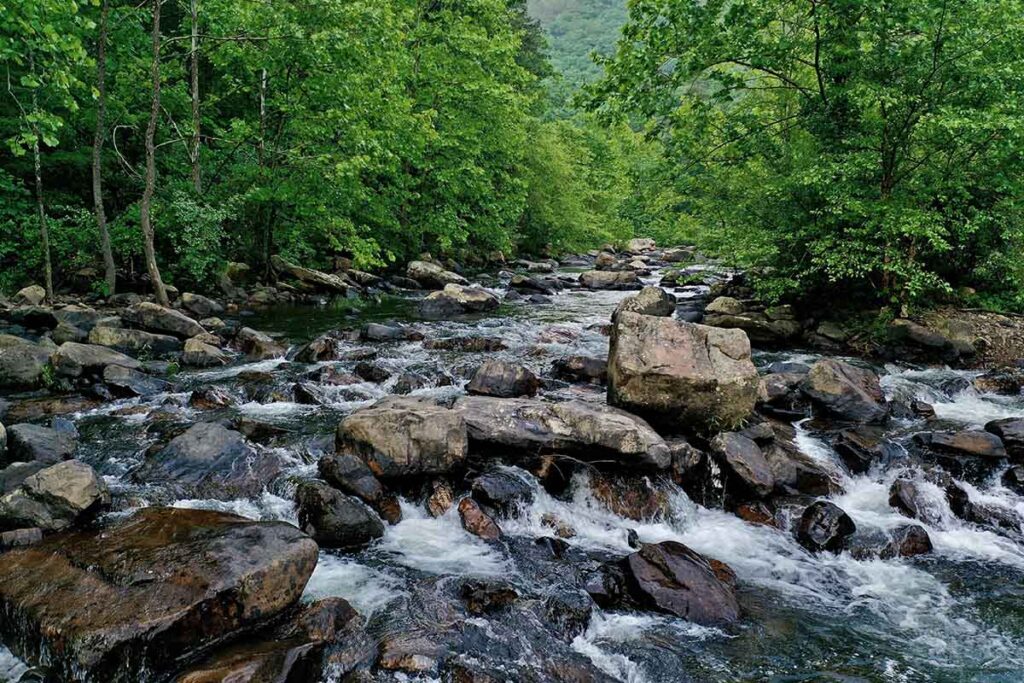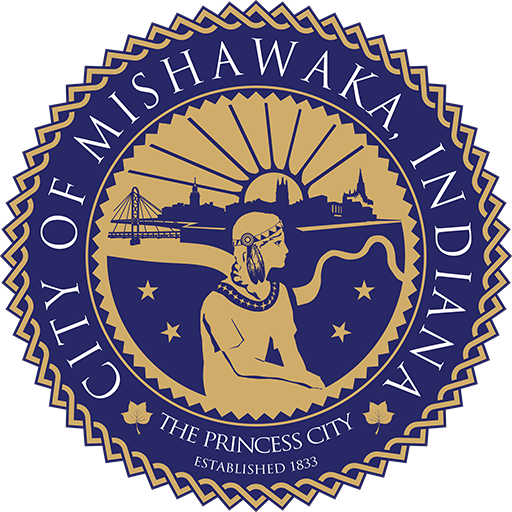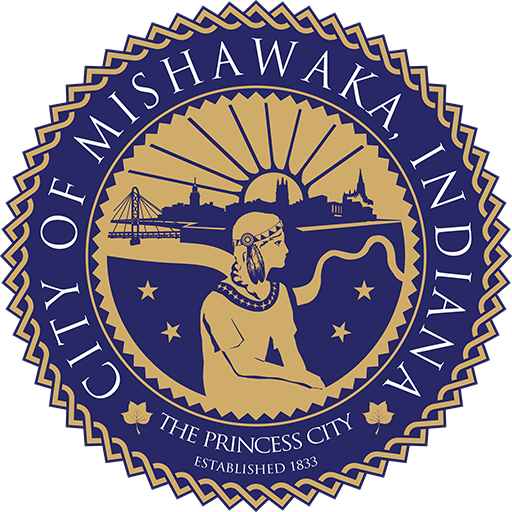Protecting Mishawaka’s Groundwater
Groundwater was once thought to be naturally protected from contamination by the filtering action of native rocks and soils. We now know that groundwater is vulnerable to contamination. Contamination can spread as it is carried through the layers of rock and soil by groundwater. This may render aquifers, once abundant with clean groundwater, unfit as a source of public water supplies.
The threat of groundwater contamination, although more obvious in large industrial cities, exists in virtually every type and size of community in Indiana. Contaminants can enter groundwater from numerous sources including landfills, lagoons, chemical spills, leaking underground storage tanks and improperly managed hazardous waste sites. Groundwater contamination can also result from some common but troublesome practices, such as the use of fertilizers and pesticides; the disposal of human, animal and agricultural waste; and the use of chemicals for roadway de-icing.

Groundwater Protection
Our goal is to protect our groundwater sources by reducing the risk of groundwater contamination before it occurs. While it is difficult to determine the “true value” of undertaking a source protection program, it is always more cost-effective to prevent contamination than to clean it up later.
In general, the capital costs of cleaning up groundwater are about 50 times more expensive than the costs of protecting it. However, the “true costs” of groundwater contamination may also include:
- Reducing the community’s confidence in the public water supply as a source of safe, reliable and affordable drinking water.
- Decreasing property values.
- Impacting the community’s ability to attract businesses and realize its full economic development potential.
Wellhead Protection FAQs
The property owner both owns and is responsible for maintaining and repairing the water service line from the shutoff valve near the property line to the house or building. The Water Department is responsible for the water mains in the street and the portion of the water service line from the water main to the shutoff valve near the property line.
Leak insurance is offered by HomeServe. is the customer’s responsibility for repairs from the curb stop to the meter.
Check your water softener. If you have one, put in a bypass. Clean you sink aerators. If this does not work or you have further questions, please call us.
This could be caused by hydrant flushing. Let your cold water run for 15 minutes. If it is not clearing, give us a call.
Your water is tested 365 days a year. We monitor the tests and make adjustments as necessary. Mishawaka Water meets and exceeds standards set by the EPA.
Our system is monitored carefully to maintain our high standards. Customers also are an excellent source of information about local water conditions. If you have a concern about your water quality, call (574) 258-1652 to resolve the problem. Quality problems may be caused by on-site plumbing conditions beyond our jurisdiction, and you may need the services of a plumber to determine the cause. Every customer inquiry is taken seriously and investigated to an appropriate resolution.
While we filter 97% of the iron out of our water, we do not treat for hardness. A good starting point to set your softener is 19 grains per gallon.
Chlorine is added to disinfect the water supply. On average, there is 1 part per million in your water. The chlorine will dissipate if you keep it in a pitcher or container overnight.
Run your water. Before drinking, flush your home’s pipes by running the tap, taking a shower, doing laundry or doing a load of dishes. The amount of time to run the water will depend on whether your home has a lead service line or not, and the length of the lead service line. Residents should contact Mishawaka Water for recommendations about flushing times in their community.
Use cold water. Use only cold water for drinking, cooking and making baby formula. Remember, boiling water does not remove lead from water.
Clean your aerator. Regularly clean your faucet’s screen (also known as an aerator). Sediment, debris and lead particles can collect in your aerator. If lead particles are caught in the aerator, lead can get into your water.
The sense of smell can be confused by other factors. A person may describe water from a sink tap as smelling “septic.” Moist, partially clogged drain traps or garbage disposals may be the actual source of the smell rather than the tap itself. Decaying waste in the drains may smell “septic,” causing water drawn at that location to seem to have the same odor.
New homes and residential units are at a minimum of 1” and cannot be reduced. Older existing homes may have a 5/8-inch meter. There is no billing difference for either of these meters.
Requests from businesses that want to downsize one step down from current size may be granted. It is the responsibility of the owner to pay for plumbing and a new meter. If upon downsizing the property owner needs to increase size back to original installation, the cost is the property owner’s responsibility as well. Please send an e-mail or letter to the Mishawaka Water Division Manager to ask for approval. After internal review, we may approve or deny the request.
Please call (574) 258-1652 and talk to our Construction Department for a tap quote.
With over 3,000 fire hydrants in our system, we attempt to paint as many as we can each summer. However, if you wish to paint a hydrant in your neighborhood, we will supply the paint and brush for you to do so. We use a red, white and blue theme and will give you an example to copy. Please call (574) 258-1652 to request the paint.
Flushing Schedule
The Mishawaka Water Department, as part of the maintenance of the water distribution system, annually flushed the water systems.
Hydrant flushing is used to remove fine iron or manganese sediment from the water mains. Iron and manganese are naturally occurring minerals found in the aquifer in Mishawaka. We treat and filter a majority of the iron and manganese to remove it from the system. However, trace amounts remain when the water leaves the treatment plant and settles out in the distribution system.
Iron and manganese do not pose health risks, but they can cause a number of aesthetic problems, such as discolored water and staining of plumbing fixtures or laundry. The fine particles of iron and manganese in the water mains can easily become re-suspended whenever there is a change in flow in the water system, such as during a fire or other periods of high water usage. By creating the high flow conditions through hydrant flushing, the Water Department attempts to remove the color causing particles in a systematic manner.
Flushing generally takes place Monday through Friday between 7 a.m. and 3 p.m. Residents and business owners are cautioned that they may experience discolored water during the hours of flushing in their area. If this happens, let your cold water spigot run for approximately 10-15 minutes and it should clear.
For additional information on the flushing program, please contact the Water Department at (574) 258-1652.

